Reto Knutti
Childpage navigation
Research highlights
The 2°C climate target and COP in Paris

What is an appropriate climate target? Will Paris deliver what it promises?
Download Und jetzt alle, Autorenbeitrag NZZ am Sonntag, November 2015 (PDF, 612 KB)
Download Auf dünnem Eis, Sonntagsblick, November 2015 (PDF, 1.6 MB)
Download "Ausreichen wird das nicht", Tagblatt, November 2015 (PDF, 2.6 MB)
Download «Marathon ist ausgeschildert», Tagblatt, Dezember 2015 (PDF, 2.4 MB)
Download A scientific critique of the two-degree climate change target, Nature Geoscience (PDF, 1.2 MB)
Download Unsinnige Debatte um das 2-Grad-Klimaziel, Meinungsbeitrag Tagesanzeiger, Dezember 2015 (PDF, 241 KB)
external page "Wir sollten jetzt den ersten Schritt machen", Deutschlandfunk, Dezember 2015
external page Scientists just undermined a key idea behind the Paris climate talks, Washington Post, December 2015
external page The 2-Degree Warming Limit Is Arbitrary And Beside The Poin, FiveThirtyEight, December 2015
Humans affect extreme weather
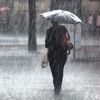
Human induced warming has already increased the odds for hot days and heavy precipitation events. This will continue, and the most extreme events are affected most strongly. The study has attracted media attention world wide.
external page Nature Climate Change: Anthropogenic contribution to global occurrence of heavy-precipitation and high-temperature extremes
external page Aktuelle Wetter-Extreme sind menschgemacht, 3sat nano, April 2015
external page Es fehlt nicht viel, und es wird extrem heisser, Tagesanzeiger, April 2015
external page New study links weather extremes to global warming, New York Times, April 2015
external page Study blames global warming for 75 of very hot days, AP, April 2015
external page Is it global warming or just the weather?, Economist, April 2015
Has global warming stopped?

Much has been speculated about the reduced surface warming in the last 15 years and the implications for the future. Several papers quantify climate sensitivity and transient response from the most recent data and explain the causes of the warming hiatus, and a number of blog and press articles over several months provide a broader perspective.
Download Nature Geoscience: Natural variability, radiative forcing and climate response in the recent hiatus reconciled (PDF, 1.6 MB)
Download GRL: Estimating climate sensitivity and future temperature in the presence of natural variability (PDF, 931 KB)
Download Nature Geoscience: Energy budget constraints on climate response (PDF, 414 KB)
ETH News: Why global warming is taking a break
Klimablog: Der Klimawandel pausiert (nicht)
Klimablog: Keine Entwarnung beim Klimawandel
external page SRF Tagesschau
Download Tagesanzeiger: Die Klimapause (PDF, 770 KB)
IPCC AR5, and how to slice the global carbon pie
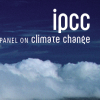
The Working Group I summary of the Intergovernmental Panel on Climate Change Fifth Assessment Report is published. Some reactions of the media, with a focus on what I think is the most relevant topic: the global carbon budget for the 2°C target.
external page New York Times: How to Slice a Global Carbon Pie?
external page BAZ: Das CO2 Budget ist schon fast weg
external page Presentation of IPCC AR5 at ETH Zurich
external page Multimedia presentation, AURA Zurich
external page IPCC AR5 WG1 Summary and drafts of chapters
external page SRF: Wissenschaft und Politik sind sich einig; SRF Autorenbeitrag, September 2013
Ocean eddies influence weather
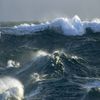
A new paper in Nature Geoscience demonstrates that small scale eddies in the ocean can affect the wind, clouds and rainfall.
Download Nature Geoscience: Imprint of Southern Ocean eddies on winds, clouds and rainfall (PDF, 1014 KB)
Download Nature Geoscience News & Views: Mesoscale eddy effects (PDF, 493 KB)
external page 20 Minuten: Auch kleine Meereswirbel ändern das Wetter
external page Kleine Wasserwirbel beeinflussen das Wetter
external page Die große Wirkung kleiner Wirbel
Mesoscale ocean eddies impact weather
On the way to four, not two degrees
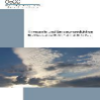
Several recent reports have highlighted the gap between a pathway to 2°C warming and the political reality. In the report “Klimaziele und Emissionsreduktion - Eine Analyse und politische Vision für die Schweiz“ we review the science and discuss the role that Switzerland could take.
external page OcCC: Klimaziele und Emissionsreduktion - Eine Analyse und politische Vision für die Schweiz
Download Interview Sonntagszeitung, November 2012 (PDF, 2 MB)
external page SF Tageschau
external page Rendez-vous SR DRS1
Bis zur Jahrhundertwende ohne Emissionen, ETH Life
Klimablog: Immer noch nicht auf dem Weg zum 2-Grad-Ziel
external page Proclim Climate Press: Ein Klimaziel für die Schweiz – Wieviel Ehrgeiz können wir uns leisten?
Climate models: useful or useless?
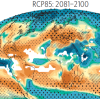
In three new papers in Nature Climate we show that some climate projections are surprisingly robust, but overall the uncertainties in projections are not decreasing quickly. Some of the uncertainty is caused by internal climate variability that can be surprisingly large.
Download Robustness and uncertainties in the new CMIP5 climate model projections, Nature Climate Change 2012 (PDF, 4.9 MB)
Download Robust joint projections for humidity and temperature extremes, Nature Climate Change 2012 (PDF, 1.4 MB)
Download Communication of the role of natural variability in future North American climate, Nature Climate Change 2012 (PDF, 3.8 MB)
Klimablog: Hurrikan Sandy und der Nutzen von Klimamodellen
The others should do something first…
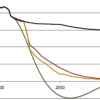
In a joint report with INFRAS we consider the implications of different burden sharing approaches for different countries in a scenario where greenhouse gases are reduced globally to reach the 2°C target. The interpretation of “common but differentiated responsibility” of course varies in the different burden sharing proposals, but developed countries will have to reduce emissions quickly in all cases.
Download Emission pathways to reach 2°C target (PDF, 988 KB)
At least three quarters of warming since 1950 manmade

A new paper in Nature Geoscience demonstrates that the global energy balance provides a strong argument that the observed warming is largely man-made.
Download Anthropogenic and natural warming inferred from changes in Earth’s energy balance, Nature Geoscience 2011 (PDF, 470 KB)
external page Nature news: Three-quarters of climate change is man-made
external page Swissinfo: Bild vom menschlichen Klima-Einfluss komplettiert
external page Scientific American: Three-quarters of climate change is man-made
external page Physicsworld: Energy balance points to man-made climate change
external page Discovery News: Human factor huge on climate change
external page BBC: Climate research bolsters 'action' call to UN talks
external page ORF: Der Mensch und der Klimawandel
external page FAZ: Der kostbare Kaffeesatz in den Klimamodellen
external page Carbonbrief: At least three-quarters of global temperature rise since the 1950s caused by humans
Klimablog: Neue Studie: Der Fussabdruck des Klimawandels
Is two degrees warming still possible?

A new paper in Nature Climate Change shows emission reductions needed for a 2°C warming target.
Download Long-term climate implications of twenty-first century options for carbon dioxide emission mitigation, Nature Climate Change 2011 (PDF, 572 KB)
external page Nature research highlight: Out-of-reach goal to limit warming
external page Pressetext.com: Klimawandel: Zwei-Grad-Ziel "noch erreichbar"
ETH Life: Letzte Chance für verbindliche Treibhausgas-Reduktionen?
Klimablog: Fünf vor zwölf für das 2-Grad-Klimaziel??
Press coverage on the 2°C target before Durban:
Download Autorenbeitrag NZZ am Sonntag: Das Klima verdüstert sich (PDF, 338 KB)
Download Tagblatt: Der Wert der Eisbären (PDF, 3.8 MB)
Download Sonntagszeitung: Nur mit Verzicht funktioniert das nicht (PDF, 522 KB)
Download Sonntagszeitung: Die immer gleichen Verlierer (PDF, 1.7 MB)
Additional work from the Climate Physics group:
external page Emission pathways consistent with a 2 °C global temperature limit, Nature Climate Change 2011
external page UNEP Report: Bridging the Emissions Gap
Swiss climate change scenarios CH2011
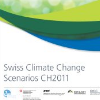
In a new comprehensive report we present new climate change scenarios for Switzerland.
external page Report, summaries and data. Deutsche Zusammenfassung.
external page Swiss TV: Tagesschau
external page DRS Echo der Zeit
external page Swissinfo: Klimawandel-Szenarien bestätigen Erwärmung
Download Bund: Klimaschutz greift erst in 40 Jahren (PDF, 156 KB)
ETH Life: CH2011 – die Klimaentwicklung in der Schweiz
Klimablog: Klimabericht «CH2011» – Forschungswissen für die Praxis aufbereitet
Tropics feel the heat
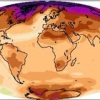
In a new paper we explore potential climate impacts from scenarios with high greenhouse gas emissions that deliberately push the limit of what is plausible.
Download The response of the climate system to very high greenhouse gas emission scenarios, ERL 2011 (PDF, 1.2 MB)
ETH Klimablog: Neue Studie: Worst-Case-Klimaszenarien zeigen starke Klimaerwärmung
ETH Life: Viel wärmer als im schlimmsten Fall?
ETH Life: Much warmer than the worst-case scenario?
external page Environmental Research Web: Going beyond the IPCC ‘worst case’
external page NZZ: Extreme Annahmen – extremer Klimawandel
external page Tagesanzeiger: Die Natur würde verrückt spielen
Download KVMR podcast: Climate models and high emission scenarios (MP3, 2.9 MB)
Which climate model prediction should I trust?
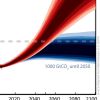
A new study shows that only a small fraction of the fossil fuel reserves can be burnt if a warming of two degrees above preindustrial should be avoided. Peak and equilibrium warming are determined by the total emitted carbon; a tonne of carbon is a tonne of carbon, whether today or in fifty years. Emissions must peak soon and be reduced be at least 50% globally in 2050 to avoid two degree warming.
Download Nature paper: Greenhouse-gas emission targets for limiting global warming to 2°C (PDF, 2.8 MB)
Download Companion Nature paper: Warming caused by cumulative carbon emissions towards the trillionth tonne (PDF, 838 KB)
Download Related commentary by the authors: The exit strategy (PDF, 329 KB)
Download Nature News and Views: Too much of a bad thing (PDF, 1.5 MB)
Download Nature Editorial: Time to act (PDF, 1 MB)
Download Related essay: The worst-case scenario (PDF, 1.1 MB)
Download Related commentary: Overshoot, adapt and recover (PDF, 2.1 MB)
external page BBC: 'Safe' climate means 'no to coal'
external page Scientific American: How Much Is Too Much?: Estimating Greenhouse Gas Emissions
ETH Life: How the “2°C target” can be reached
external page NZZ: Was zählt, ist die kumulierte Menge Kohlendioxid
ETH Life: Wie das «2°C-Ziel» erreicht werden kann
external page 20 Minuten: Klimawandel erreicht kritischen Wert
external page SF Tagesschau: Studie mahnt zu dringendem Klimaschutz
external page Spiegel Online: Kritische Klimagrenze ist nur noch schwer zu erreichen
The 2008 Olympics as an aerosol field experiment
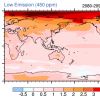
New simulations with the a comprehensive high resolution model under strong mitigation scenarios show that about half of the climate change can be avoided by the end of the century. A two degree warming target preserves much of the permafrost and Arctic sea ice.
Download GRL paper: How much climate change can be avoided by mitigation (PDF, 1.5 MB)
Download Science editor’s choice: How low can we go? (PDF, 269 KB)
Download Nature Reports Climate Change Research Highlight: Cuts curb impacts (PDF, 335 KB)
external page News New York Times: Emissions Cuts Could Lessen Climate Change
external page News 20 Minuten: CO2 muss um 70 Prozent gesenkt werden
external page News Focus Online: Die Zukunft der Arktis
Irreversible climate change

Even if carbon emissions were instantly reduced to zero, most of the climate change that has occurred is irreversible for a thousand years. While some impacts are still uncertain, there are robust predictions for both short term impacts like droughts and long term effects like sea level rise.
Download PNAS paper: Irreversible climate change due to carbon dioxide emissions (PDF, 982 KB)
external page Realclimate background article: Irreversible Does Not Mean Unstoppable
external page News Swissinfo: Study warns climate change is irreversible
external page News New Scientist: Effects of climate change now irreversible
external page News Washington Times: Climate change fallout irreversible
external page NY Times Dot Earth: The Greenhouse Effect and the Bathtub Effect (worth reading!)
ETH Life: Irreversible climate change
ETH Life: Unwiderruflicher Klimawandel
Download News Sonntagszeitung: Tausend Jahre Dürre (PDF, 374 KB)
external page News NZZ: Lang anhaltende Folgen der Klimaerwärmung
external page News 20 Minuten: Es gibt kein Zurück
Research interests
My research interests are the changes in the global climate system caused by the growing emissions of anthropogenic greenhouse gases like carbon dioxide. I use numerical models of different complexity, from simple energy balance to three-dimensional coupled climate models that resolve the atmosphere, ocean, land, sea ice and their interactions. In particular, I work on simulation of scenarios for future climate change, the quantification of uncertainties in the climate response, and the development of methods to constrain important feedback processes in the climate system by comparing observations with model results.